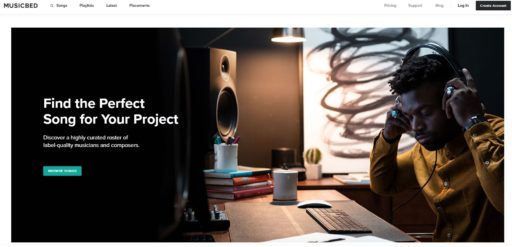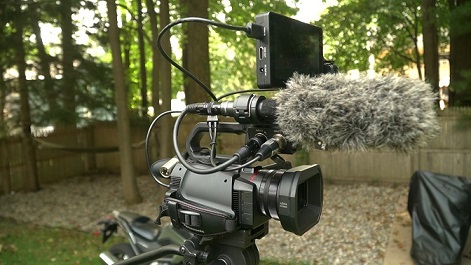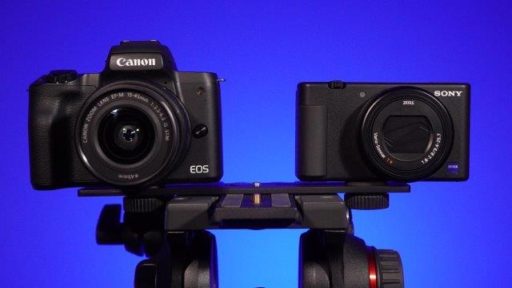Are Camcorders Dead?
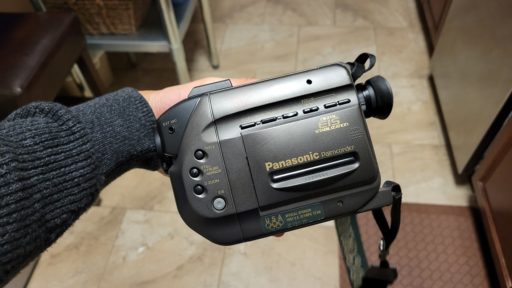
I was a hobbyist videographer when I was a boy. My mother had an old Panasonic VHS camcorder that I used as a kid to document family events and nonsense like shots of my hamster spinning around on his hamster wheel. This was very exciting stuff. In middle school and even during high school this camera was used to film school projects, music videos, and of course more family events. To me it was the coolest thing. I mean it had a viewfinder a bunch of buttons, and it even came with a light that I never used because who cares about lighting right?
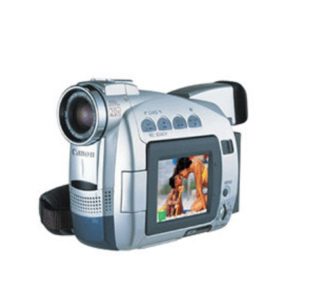 Fast forward to my college years circa 2000 and I upgraded to a mini dv camcorder. It was a canon zr70 actually, and it was even more special due to the smaller size, the added lcd screen, and the ability to connect to my computer via firewire. I could actually copy video to my computer! Amazing! Now although I was a hobbyist at this point, I still felt like a professional with all this technology at my fingertips.
Fast forward to my college years circa 2000 and I upgraded to a mini dv camcorder. It was a canon zr70 actually, and it was even more special due to the smaller size, the added lcd screen, and the ability to connect to my computer via firewire. I could actually copy video to my computer! Amazing! Now although I was a hobbyist at this point, I still felt like a professional with all this technology at my fingertips.
Now current day in the year of 2022, there are so many ways to shoot exceptional video. Let’s face it, flagship phones like the Google Pixel 6 and the Apple iPhone 13, can make videos that can be viewed on your 60 inch television screen or movie screen for that matter. But are they a practical tool for a professional videographer / cinematographer? Maybe not, but then again, I guess that really depends on what your shooting. For me, I shoot weddings mostly, so a camcorder would be the best choice for this because I need to get shots quickly. There are no re-takes, I only have one chance to capture that special moment. Fiddling with my lens, so I can switch from my wide prime to my zoom lens may not be any option, so having a camcorder with a dedicated lens might be the best option. Or is it? Because here is the big problem – since I got into the business of shooting video professionally in 2014, the camcorder options have not really changed all that much. Around that time I remember seeing a few 1 inch camcorders such as the CX900 or Sony Nx100 which were both Full HD options. I actually owned the cx900 for a short time. I was impressed by the image quality and zoom capabilities at the time, but the camera really limited your ability to adjust the image. You really couldn’t tweak the colors much and to my eye they could be a little over-saturated at the time. Fast forward to modern day and there are a lot more options as far as camcorders go, but for now I will only focus on few. I’m being a little selfish here, so I want to talk about a few that I have experience with. I personally owned these cameras for some time and here’s what I found when you put them up against mirrorless contenders and why I believe they are a dying breed.
I used the Panasonic hc-x1500 4k Camcorder, and I found the focus is tricky to use. On a Canon or Sony mirrorless camera tracking a subject is as easy as tapping on the subject on the screen, it doesn’t work the same way on the x1500. There are more settings that need be configured in order to get it to work. A matter of fact the only way to get face tracking to work on the Panasonic x1500 is through the use of Full Auto mode. There are few other tricks that can be used to make sure your AF is working well too. In this video you can learn some focusing tips and also see how the AF performs. All-in-all I found the AF functionality to be pretty disappointing. With this being a camcorder that is nearly $2000 once the detachable xlr handle is purchased, I just figured it would do better than a $600 Canon M50 mirrorless camera.
The nice thing about a Full frame sensor camera, APS-C, or even a micro 4/3 camera is having the ability to blur a background. Achieving this shallow depth of field is always easier with larger image sensors. Most camcorders either come with a 1/2 inch or 1 inch sensor which is really small compared to any of the other sensors mentioned. Unfortunately as a result everything in your frame will be in focus. Now let’s keep in mind the 1 inch sensor is better than a 1/2 inch sensor when comes to background blur, but not by leaps and bounds. As a wedding videographer, I shoot in a lot of picturesque places but despite that, I still like adding a little blur to a background every now and then. It really puts the focus on my subject whether that is the couple getting married, a parent, an aunt, a flower, a baby, a dog, it doesn’t matter. Sometimes the option is nice. Now it isn’t totally impossible, but it is much harder to achieve. Here a couple of examples taken from the Panasonic x1500 compared to the Sony A6400 with a 18-150mm f4.
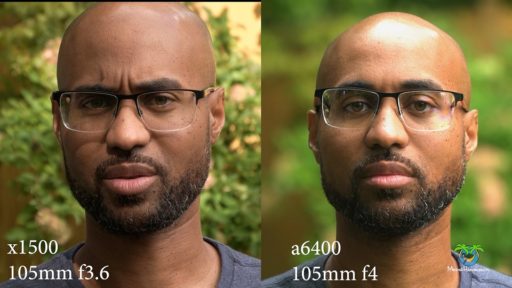
Check out the full video here: https://youtu.be/vfyCcFCcn9o
Because of the smaller image sensor, I have noticed that the overall image quality of these camcorders is just not as good as any modern day mirrorless camera. I owned the Canon XF400 which is a 1 inch camcorder and the image quality was really good for a camcorder. Honestly, it was the best I’ve ever seen, but it still isn’t nearly as good as the much lesser priced Sony A6600 when shooting indoors. However, I feel this is also because of the lack of that shallow depth of field mentioned above. When you have a shallow depth of field, it just makes things look sharper. Also the funny thing about the XF400 is that it has no 10-bit recording option. Neither does the newer Canon Xa50/Xa55. This is not true of all professional camcorders though, but for the price point of the camcorders just mentioned, I figured there would be some more codec options included. Why do many of the mirrorless cameras have more codec options than a dedicated video camera? That doesn’t make any sense to me.
And here’s the biggest problem for me when it comes to camcorders – poor low light performance. After all these years, you would think, they would make one of these with exceptional low light performance like the Panasonic Gh5s which of course is a mirrorless camera.
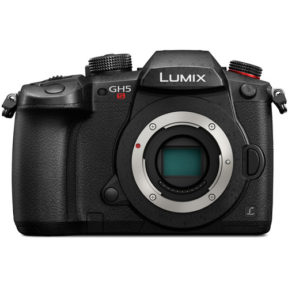
Why is that they don’t make a camcorder around that sensor and give it dual ISO like the GH5s? Can you imagine a camcorder with excellent image stabilization, an xlr handle, ND filters, and all the advanced shooting codecs of the gh5s, and all image quality. While we’re at it, keep the ability to live stream directly from the camera like the option found on the Panasonic Gh5 II, but also give it really good auto-focus, like the focus found on any of the Sony or Canon mirrorless cameras. That would be something. Instead, it seems like all the manufactures continue to add more performance and specs to their cinema and mirrorless line of cameras, but the camcorder gets left to die a slow painful death. I have a feeling these will not be produced for average videographers like me anymore. I won’t be using any of these as tools for wedding films anytime soon. On the bright side, there’s always the new GH6 I guess. I can’t lie that leaves me wanting just a little more too.
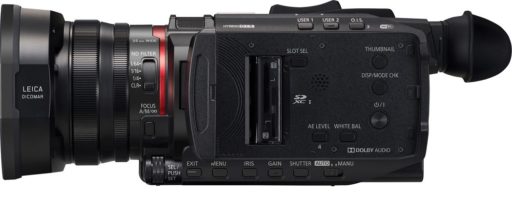 Here’s something very interesting. I actually love a fixed lens. There’s nothing like taking your camera out of the bag and not having to take a body cap off, remove two lens caps and then put on your lens…oh and be careful about where you put all those caps. How about having to swap a lens while you are shooting a wedding and missing that important split second moment or leaving the wrong lens on and having a shot that is much wider than you like or too close? This is where the camcorder shines and doesn’t shine at the same damn time. The problem is that most of these lenses are not that fast. When I say “fast,” I’m referring to the smaller aperture size. The x1500 for instance has an aperture(iris) of f1.8 – 4. F1.8 is very wide and works great if you only want to shoot at 24mm, but as soon as you zoom in just a little the aperture closes down to f4. And with a camera that has such a small sensor, that really kills your low light performance and indoor shooting performance in general.
Here’s something very interesting. I actually love a fixed lens. There’s nothing like taking your camera out of the bag and not having to take a body cap off, remove two lens caps and then put on your lens…oh and be careful about where you put all those caps. How about having to swap a lens while you are shooting a wedding and missing that important split second moment or leaving the wrong lens on and having a shot that is much wider than you like or too close? This is where the camcorder shines and doesn’t shine at the same damn time. The problem is that most of these lenses are not that fast. When I say “fast,” I’m referring to the smaller aperture size. The x1500 for instance has an aperture(iris) of f1.8 – 4. F1.8 is very wide and works great if you only want to shoot at 24mm, but as soon as you zoom in just a little the aperture closes down to f4. And with a camera that has such a small sensor, that really kills your low light performance and indoor shooting performance in general.
It seems that all the major camcorder manufactures – Sony, Canon, Panasonic, and JVC, simply put out the same camcorder every 4 years, and add a few codecs, change the exterior look of the camera, and that is about it. It’s still a camcorder with dedicated buttons, power zoom, Xlr handle, integrated lens, and stabilization, and ND filters. I love all of these things, but please give me better image quality. Why do I have to choose between image quality and video functionality? I just want both together. Can one of the major manufactures give us that?
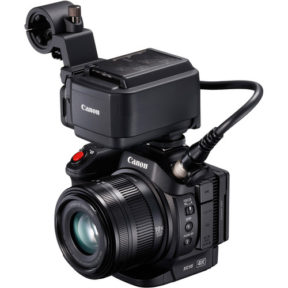 Let me be fair though, Canon, has innovated some. Their xc10 and xc15 were definitely different in terms ergonomics. And that was refreshing to see, but you can only record 4k to expensive c-fast cards, and there are a lack of customizable buttons…and add to that the smaller 1 inch sensor. Also I think all camcorders with a fixed lens need to have a power zoom, and the xc15 was missing that as well. I wanted to see a vari-angle flip screen instead of a tilt screen. It is the right size for vlogging, but the screen makes it hard to use it for that function. However I’m hoping they add some of the things mentioned into that design. I think they would have a run-and-gun machine that would be great for event shooters like myself.
Let me be fair though, Canon, has innovated some. Their xc10 and xc15 were definitely different in terms ergonomics. And that was refreshing to see, but you can only record 4k to expensive c-fast cards, and there are a lack of customizable buttons…and add to that the smaller 1 inch sensor. Also I think all camcorders with a fixed lens need to have a power zoom, and the xc15 was missing that as well. I wanted to see a vari-angle flip screen instead of a tilt screen. It is the right size for vlogging, but the screen makes it hard to use it for that function. However I’m hoping they add some of the things mentioned into that design. I think they would have a run-and-gun machine that would be great for event shooters like myself.
Conclusion
I think the camcorder is dying a slow death. I for one want one, but I would prefer to have one that will work well indoors in low light situations. I shouldn’t be forced into a giant camcorder, so I can get a few more advanced shooting codecs. Make it into a smaller package, make it customizable, and give me good auto focus. Please visit my Youtube channel to see more videos about camcorders, mirrorless cameras. and video production:
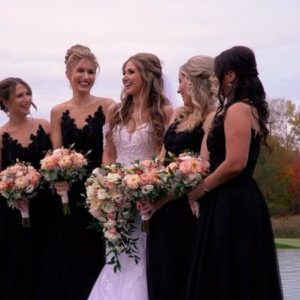
If you’re looking for a wedding videographer in the Upstate NY area, please visit my wedding page.

